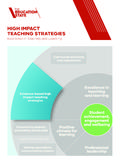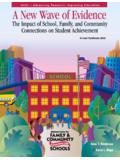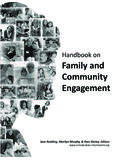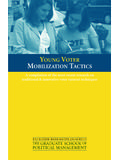Transcription of The Impact of Student Engagement on Learning: …
1 The Impact of Student Engagement on learning : The Critical 10thEPC for California1By: Cricket Kidwell, article appeared in LeadershipMagazine, Journal of the Association of California School Administrators (ACSA), March-April 2010 Something is amiss in the California accountability system. While the school improvement and accountability system appears to have shown significant gains in reading and math at primary grades over the course of the testing program, recent research data has identified issues that pose barriers to effective Student learning .
2 More specifically, the question of how well are we preparing young people to assume roles in the workforce, as citizens, and as leaders in the 21stcentury has met with disappointing conclusions. The bad news is reinforced by current research that reports low graduationcompletion rates1, stagnant scores in history-social science and science, minimal increases in proficient and advanced scores at upper grade levels,2and insufficient attention to writing skills and life skills across the curriculum. In addition, we have seen negligible progress in the integration of career tech, 21stCentury Skills3, civic education, and Student Engagement .
3 The time has come to focus attention on the quality of instruction for students and Student Engagement . Student Engagement The ProblemThe National Dropout Prevention Center has reported a dismal picture of California high school graduation rates of only of enrolled freshmen completing high school4. Over the course of the state testing program, California has shown minimalimprovement in state standards testing scores and high school exit exam results. School improvement efforts continue to move very slowly for many students in California response to the need to support the lowest performing schools in the state, the California Department of Education has established a school improvement monitoring system using academic program surveys to evaluate school improvement efforts.
4 While each of the components is important and critical in the school improvement process, the omission of one very critical element has helped to create a very incomplete school improvement process. Fortunately, many educational leaders recognize that Student achievement is far more complex than data analysis and high quality teaching and learning cannot be happenstance. Unfortunately, the widespread use of the system without attention to Student Engagement reinforces the problem. Student Engagement The ResearchStudent Engagement is an emerging field of research and the initial results are both startling and profound.
5 Review of any current research in Student achievement is incomplete without consideration of the enormous Impact of the Student Engagement variable in Student learning . It is important to remember that young people are not just adults-in-training; their lives as they experience them now are as valuable and meaningful as those of the adults they will become. How they feel about school and their own achievement is, for most young people, central to their daily lives whether they feel good about themselves and cared for at school; whether they are frustrated, anxious, bored, or depressed; whether they feel vibrant and excited by what they are learning ; and, for that matter, whether they are learning at all.
6 5 The Impact of Student Engagement on learning : The Critical 10thEPC for California2A longitudinal study conducted by Isabelle Archambault, et al, has found a significant correlation between Student Engagement and reliably predicted school dropout The study confirmed the importance of cognitive as well as behavioral Student Engagement and concluded that participation and active learning are critical determinants to Student investment in their education. Other researchers have also reported positive correlations between active Student learning and Student achievement and have concluded that Student Engagement is frequently the key determinant.
7 Yonezawa, et al, pose the question, What keeps students interested and engaged in school? Unfortunately, in today s climate of increased rigor in classrooms, we are simultaneously losing sight of the need to provide students with an education that is both challenging and when students see the purpose of engaging in schools, as students and agents of change, will Engagement and students academics and lives improve. 7 Monitoring School Improvement Minus OneWhat if the educational leaders in California improved testing frequency, data collection, data analysis, assessment monitoring systems, and school schedules, and still find that students are not adequately progressing as they move through the system?
8 What if we require that teachers have state-approved instructional materials, meet with colleagues regularly, test students regularly, analyze assessment data, and develop pacing guides, and still we find that students are feeling disenfranchised and unmotivated? What if, in spite of all the administrative and operational changes, students perceive the curriculum to be irrelevant, meaningless, and unconnected to real life? There is a part of the educational improvement equation that is not adding up. Where is Student Engagement ? The California Department of Education school improvement process is centered on nine Essential Program Components (EPCs) that measure school structures in supportof academic achievement.
9 Of the nine EPCs, six of the measures are focused on reading-language arts and math (instructional materials, instructional time, lesson pacing, school administrator training, instructional assistance and support for teachers, and a Student monitoring system). Those, along with the EPCs that focus on credentialed teachers and professional development, teacher collaboration meetings, and fiscal support, are focusedon administrative operations. None of the nine components address Student Engagement , Student involvement in the learning process, development of higher level thinking skills, or application of skills.
10 None of the EPCs mention strategies for active learning . None of the EPCs require demonstration of how learning in the content subjects of history-social science and the sciences can involve students in service learning , civic Engagement , environmental studies, public policy, current events, global understanding, and healthy living. There remains an insignificant accountability process for the teaching of History-Social Science, Science, writing, and higher level thinking skills. The research and the evidence suggest that California has neglected a critical element in the school monitoring process and a 10thEssential Program Component is necessary to rectify the omission.






